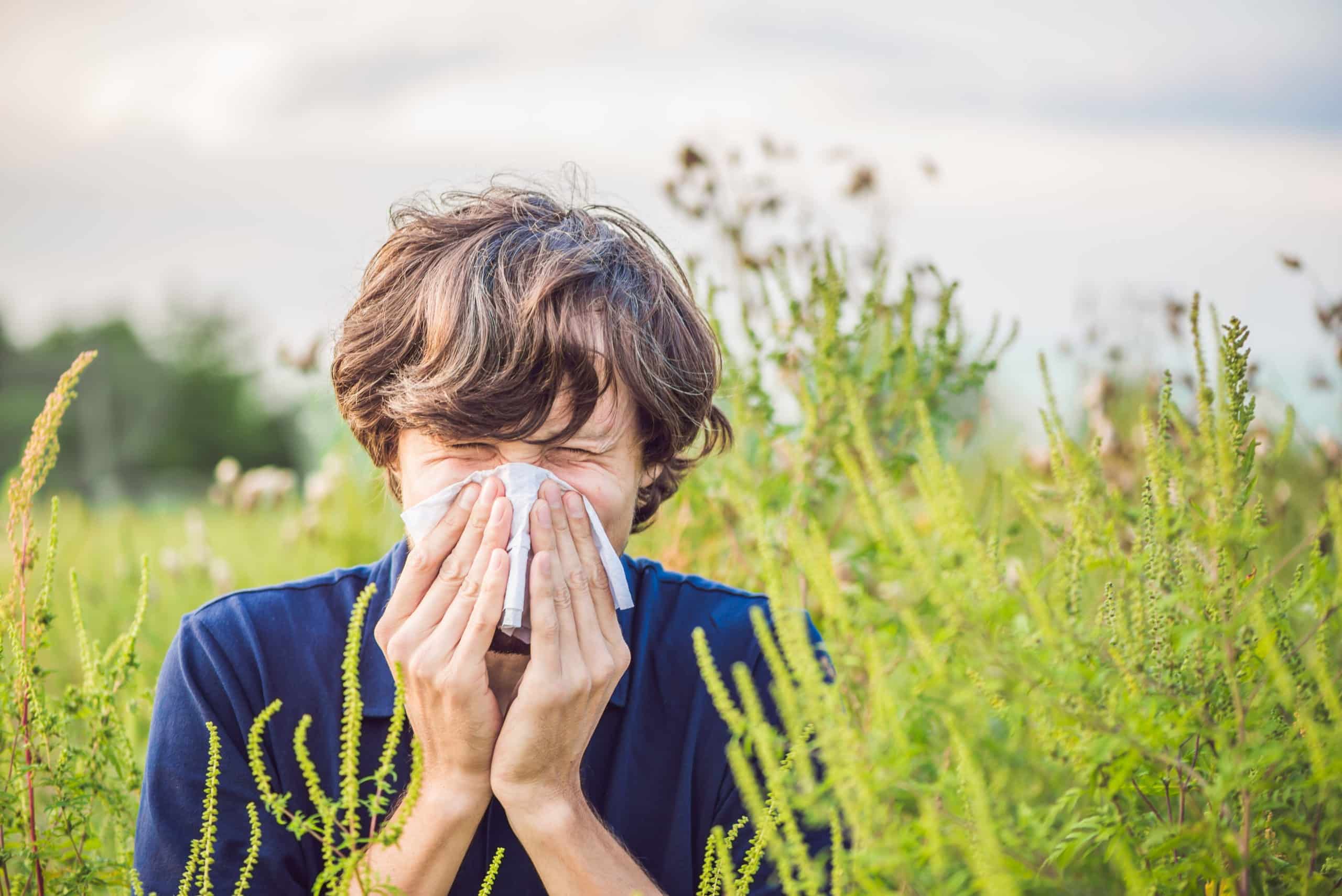What to Know About Ragweed Allergies

Ragweed season occurs from the late summer into early fall. Starting sometime in August, around 23 million Americans have allergy symptoms from ragweed pollen. Those who have allergies and asthma may also have notable allergy symptoms as well.
When ragweed plants release their pollen in the air, you may experience allergy symptoms. Usually, these continue until the first frost. Ragweed season usually peaks in the middle of September in most areas of the country.
What is Ragweed?
Ragweed is a plant that is found throughout the country. It is most prevalent in the East and Midwest. Although ragweed plants only live for a single season, their pollen can disperse and stick around for many weeks, causing misery in individuals who are allergic.
In the middle of August, the plant sports mature flowers that release pollen. Warm temperature, humidity and breeze can help release it far. Ragweed pollen can travel for as far as 400 miles, but most of it simply lands close to the plant itself.
Ragweed can easily overgrow in areas with ample water and fertilizer. People with ragweed allergies can suffer even if there’s only one plant in the area.
What is a Ragweed Pollen Allergy?
The immune system’s role is to detect foreign substances and eliminate them from the body. When you have an allergy, your immune system reacts when an allergen comes into contact with you. Ragweed pollen allergies cause certain symptoms: hay fever or rhinitis. There are 17 types of ragweed plants in the United States. The pollen can easily spread for many miles thanks to wind.
Who is Allergic to Ragweed?
Around 75 percent of people who suffer from pollen allergies are allergic to ragweed. However, if you are allergic to any type of pollen, you can develop a ragweed allergy at any point. Additionally, if you’re allergic to ragweed, you may have allergy symptoms when eating the following foods as well:
• Banana
• Cantaloupe
• Cucumber
• Honeydew melon
• Sunflower seeds
• Watermelon
• White potato
Oral allergy syndrome may occur due to the immune system confusing ragweed pollen with the above foods. You may experience symptoms like itching of the mouth, throat, face or tongue.
Symptoms of Ragweed Allergy
Allergic rhinitis or hay fever occurs when you have a ragweed allergy. Specific symptoms include the following:
• Itchy eyes, nose and throat
• Postnasal drip
• Puffy eyes
• Sneezing
• Stuffy or runny nose
The worse your allergies, the worse your symptoms. You may also have worse symptoms if you have asthma. You may experience headaches, congestion and even chronic sinusitis, which can interfere with your sleep.
Being Diagnosed
If you believe you have a ragweed allergy, it’s wise to see an allergist for testing. A skin prick test can determine whether you indeed have an allergy. Testing involves a small bit of ragweed pollen placed on the skin of your arm with a needle. If you are allergic, you will have a reaction that involves redness, itching or swelling within 15 minutes.
Managing Your Symptoms
While there’s no cure for ragweed allergies, you can manage your symptoms. Always keep track of the pollen count in your area. Stay indoors and keep the windows closed while running the air conditioner. Try to avoid being outdoors after 10 AM and before 3 PM as peak times for pollen are between those hours.
When you do go outside, you should do a few things when you return home. Take your shoes off outside or just inside the door and shower and shampoo at night to minimize symptoms at bedtime.
Take antihistamine medications to manage your allergy symptoms. You may want to also take a nasal spray to combat congestion and runny nose.
If you live in Alabama and need testing or treatment for a ragweed allergy, contact Alabama Ear, Nose and Throat Specialists, LLC at your earliest convenience.






